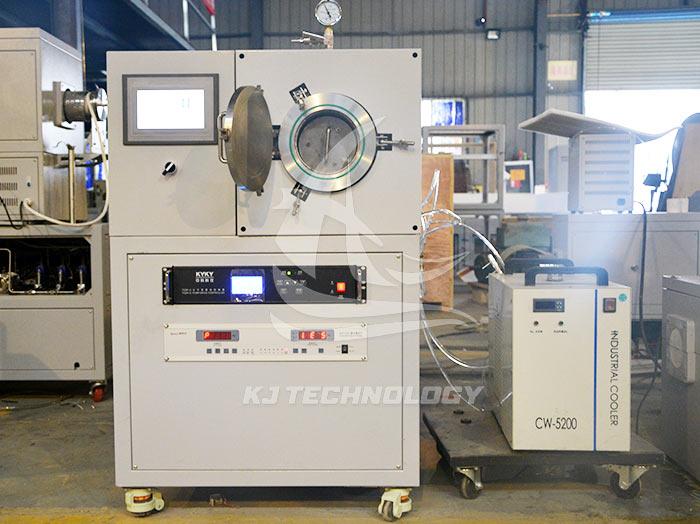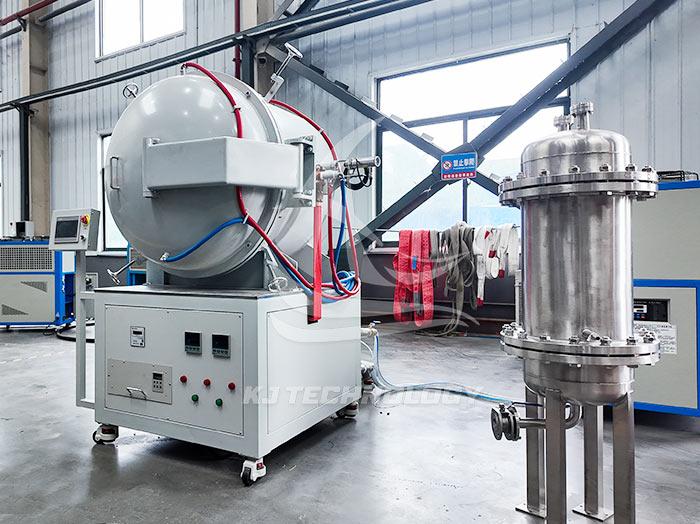What processes can aluminum brazing vacuum furnace handle?
 07-03-2025 Author: KJ technology
07-03-2025 Author: KJ technology
Aluminum brazing vacuum furnace can handle various processes, including vacuum brazing, heat treatment, and composite processes, as follows:
1. Vacuum brazing process
Aluminum alloy brazing
Core applications: Vacuum brazing of automotive air conditioning evaporators, condensers, aluminum heat exchangers, waveguide tubes, and other components.
Advantages: By eliminating oxide films in a vacuum environment, high-quality connections can be achieved without the need for soldering agents. The thermal conductivity of the joint is consistent with that of the base material, making it suitable for lightweight and high-performance demand scenarios.
Typical case:
Batch production of aluminum radiators such as parallel flow condensers and stacked evaporators.
The brazing of aluminum lithium alloy fuselage components in the aerospace field meets the requirements of high strength and corrosion resistance.
Brazing of other materials
Stainless steel: Vacuum brazing of oil coolers and stainless steel insulated cups to avoid oxidation and pollution in traditional processes.
Titanium alloy: used in high-strength and lightweight fields such as aerospace and medical implants.
Hard alloy/high-temperature alloy: brazing of components such as cutting tools, molds, turbine blades, etc. to improve wear resistance and high-temperature resistance.
2. Heat treatment process
vacuum tempering
Applicable materials: high-speed steel, tool and mold steel, bearing steel, stainless steel, etc.
Purpose: To eliminate internal stress, improve toughness and service life.
Case: Vacuum tempering treatment of automotive engine bearings to reduce the risk of fatigue cracks.
aging treatment
Applicable materials: non-ferrous metals such as aluminum alloy and copper alloy.
Purpose: To enhance mechanical properties such as hardness and strength through aging strengthening.
Case: Aging treatment of aviation aluminum alloy structural components to meet performance requirements in extreme environments.
Annealing treatment
Applicable materials: stainless steel, titanium alloy, etc.
Purpose: Soften materials and improve processing performance.
Case: Annealing treatment of titanium alloy sheet for subsequent forming and processing.
3.Composite process
Integration of brazing and heat treatment
Process: After brazing is completed in the vacuum furnace, it is directly subjected to aging or tempering treatment to shorten the production cycle.
Advantages: Reduce the number of workpiece transfers, avoid secondary pollution, and improve process efficiency.
Case: The integrated process of brazing and annealing for automotive radiator cores has increased the yield to over 99%.
Vacuum sintering
Applicable scenarios: sintering of powder metallurgy parts, such as hard alloy cutting tools, magnetic materials, etc.
Advantages: Vacuum environment prevents oxidation, improves material density and performance.
4. Special Process Expansion
Vacuum carburizing
Applicable materials: high alloy carburizing steel (such as 12Cr2Ni4A), structural steel (such as 20CrMnTi), etc.
Purpose: To achieve carburizing in a vacuum environment, improve surface hardness and wear resistance.
Case: Vacuum carburizing treatment of gear parts to reduce deformation and improve accuracy.
Vacuum chemical heat treatment
Process types: such as vacuum carbonitriding, vacuum nitriding, etc.
Purpose: To improve the surface properties of materials, such as corrosion resistance and fatigue resistance, through chemical heat treatment.








